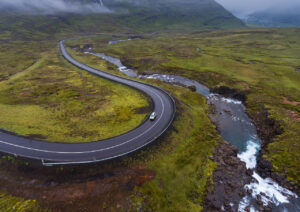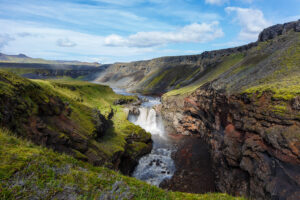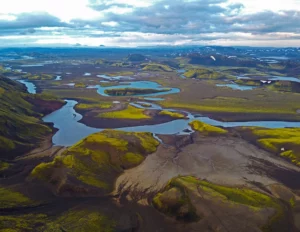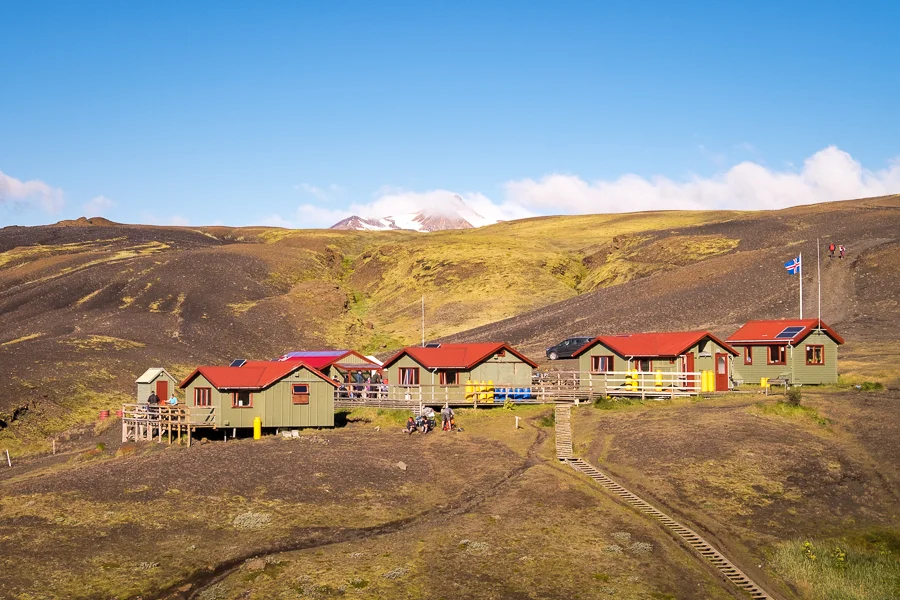
The Icelandic Highlands are a vast and rugged wilderness, offering some of the most breathtaking landscapes in the world. Due to the remote and often harsh conditions, proper accommodations are essential for those venturing into this untamed region. Unlike the comfort of city hotels, Highland shelters and lodges are designed to provide safety, warmth, and a true wilderness experience. Beyond their practical use, these shelters carry a deep cultural and historical significance, woven into the fabric of Iceland’s past and present.
A Legacy of Survival
For centuries, the Icelandic Highlands have been both a barrier and a refuge. Early settlers, known as the Norse, arrived in Iceland around the 9th century, bringing with them the knowledge of survival in harsh climates. The Highlands, with their extreme conditions, were largely avoided except by those traveling between the north and south or seeking temporary shelter while herding sheep. Over time, a network of simple huts and waypoints was established, ensuring safe passage through the unforgiving terrain.
Many of today’s mountain huts and shelters stand on historic routes used by farmers, traders, and even outlaws. The Highlands were once a place of exile for those who had broken the law, forced to survive in one of the most inhospitable places on Earth. Legends of these outlaws, such as Fjalla-Eyvindur, who lived in the wilderness for decades, are still told today, reminding visitors that these lands have long been a place of both hardship and resilience.
—
The Role of Highland Shelters in Icelandic Culture
In Icelandic culture, the concept of community and hospitality is deeply ingrained. Historically, anyone traveling through the Highlands could expect shelter if they arrived at a farmstead or hut. Even today, mountain huts and lodges continue this tradition, offering a place of refuge to modern adventurers. The communal nature of these huts fosters a unique bond between travelers, much like in the past when wanderers would gather around a fire to share stories of their journeys.
The “Þórsmörk region” exemplifies this cultural tradition. Named after the Norse god Thor, Þórsmörk has long been a place of myth and reverence. Many of the huts and lodges in this area have been used for centuries by herders and travelers navigating the rough terrain. Today, it remains one of the most beloved hiking destinations in Iceland, blending history, mythology, and modern adventure.
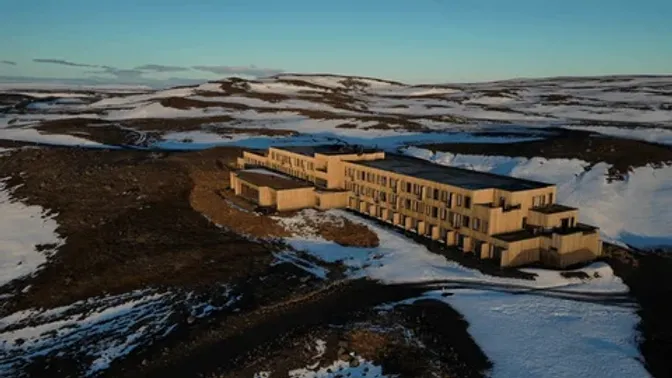
From Turf Houses to Modern Lodges
Early Icelandic shelters were often turf houses, built from the materials available—earth, stones, and wood. These structures were designed to withstand harsh winters, with thick walls insulating against the cold. While turf houses are rarely used for accommodation today, a few historical examples remain preserved, offering a glimpse into the past.
Modern accommodations in the Highlands have evolved significantly. Many mountain huts, though still basic, are built with sturdy materials to endure Iceland’s extreme weather. Some highland lodges, such as those in “Kerlingarfjöll”, have introduced eco-friendly designs, blending sustainability with comfort. Despite these advancements, the essence remains the same: providing a safe haven for those venturing into the Highlands.
—
The Spirit of the Highlands
Staying in the Icelandic Highlands is more than just finding a place to sleep—it’s about connecting with a land that has shaped Icelandic identity for over a thousand years. Whether you’re resting in a centuries-old mountain hut, a modern eco-lodge, or a simple campsite under the northern lights, you are experiencing a tradition that has stood the test of time. The Highlands, with their history of survival, storytelling, and resilience, invite every traveler to become part of their ongoing story.

